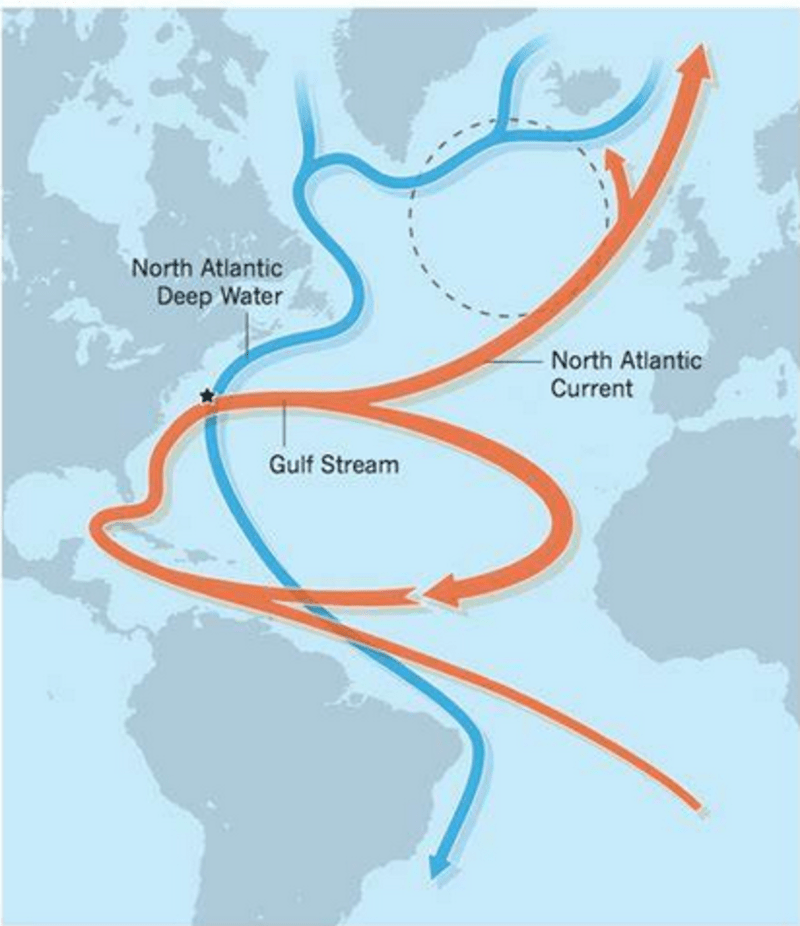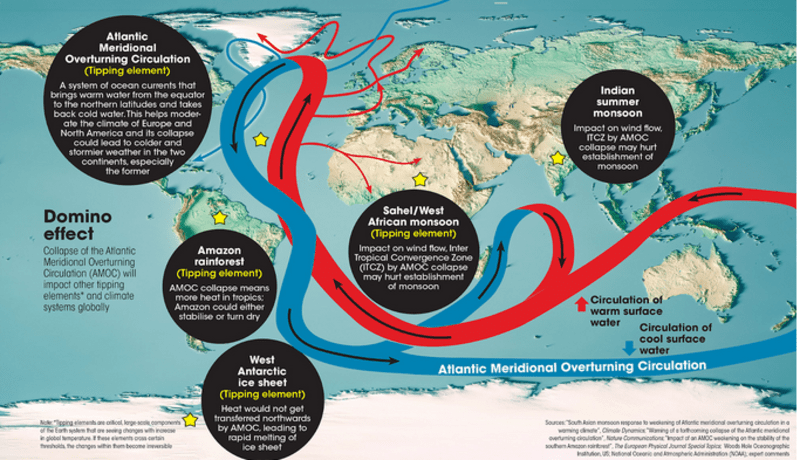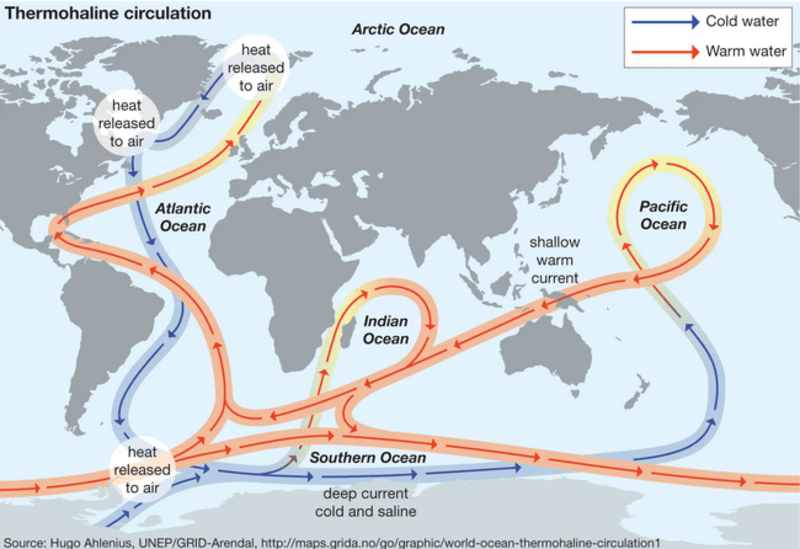- Home
- Prelims
- Mains
- Current Affairs
- Study Materials
- Test Series
Atlantic Meridional Overturning Circulation(AMOC)
Atlantic Meridional Overturning Circulation (AMOC):
- The Gulf Stream and the North Atlantic Current (red line) transport warm salty surface waters from the tropics to the northern regions.
- The water then cools down, increases in density, and sinks into the North Atlantic Ocean, in a phenomenon called downwelling or overturning.
- Cold, fresh water from the melting ice of the Arctic is added to the cooler ocean that moves towards the equator (Blue line).
- This cycle, therefore, acts like a heat conveyor belt, warming the northern latitudes and cooling the southern latitudes.

Slowing Down
For the past few decades, more fresh cold water has been added to the North Atlantic Ocean due to increased precipitation and rapid melting of the Greenland ice sheet, reducing the water''s salinity and density. In other words, the colder layer of the ocean is expanding and the warmer layer is contracting. This is slowing down AMOC and will eventually lead to its collapse.
Tipping Elements:
- If this prediction is deemed true, AMOC may be the first of the 16 climate-tipping elements to be breached.
- Tipping elements are large-scale systems that influence the planet’s climate and ecology, which are changing due to warming and the accumulation of greenhouse gases in the atmosphere from anthropogenic emissions.
- If these elements cross certain thresholds due to a temperature rise, changes in them will become irreversible. AMOC’s collapse could also have a cascading impact (The Domino Effect) on the stability of other tipping elements and climate systems in a wider geography.
Significance of AMOC:
- It helps to disperse heat and energy throughout the earth.
- Because of AMOC, the climate in Western Europe is less severe even during the winter due to the presence of the Gulf Stream as well as the North Atlantic Drift current.
- Heat distribution to the polar regions largely depends on thermohaline circulation. As a result, it impacts how quickly sea ice forms at the poles, which in turn affects other components of the climate system such as the albedo (Albedo is the fraction of light that a surface reflects).

Consequences of slowing down:
- A collapsed AMOC would cause widespread cooling across the northern hemisphere and less precipitation in places such as Europe, North America, China, and some parts of Russia in Asia.
- An increase in regional sea level along the northeast coast of North America.
- Excess heat due to a collapsed AMOC could lead to less rainfall over the Amazon rainforest, making it drought-prone and dry. There is fear that the collapse could change the hydrological cycle of the Amazon and potentially transform it into a savannah state.
- More winter storms in Northern Europe.
- Decrease in Sahelian summer rainfall.
- Hinder monsoon formation and thus the summer monsoon circulation in South Asia and India could weaken.
- More ocean heat in the southern hemisphere may also impact the stability and melting of the West Antarctic ice sheet.
Thermohaline circulation:
Winds drive ocean currents in the upper 100 meters of the ocean''s surface. However, ocean currents also flow thousands of meters below the surface. These deep-ocean currents are driven by differences in the water''s density, which is controlled by temperature (thermo) and salinity (haline). This process is known as thermohaline circulation.










 Latest News
Latest News
 General Studies
General Studies